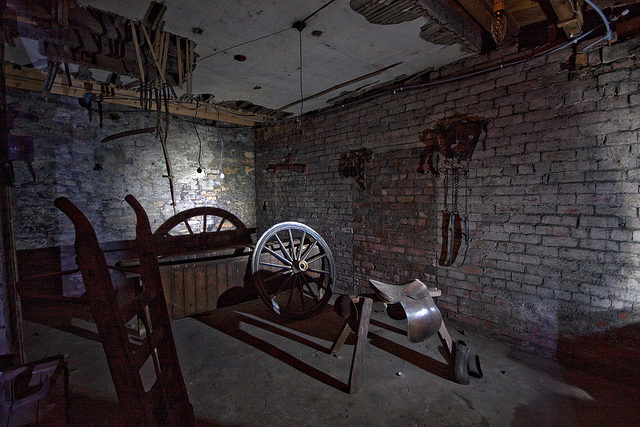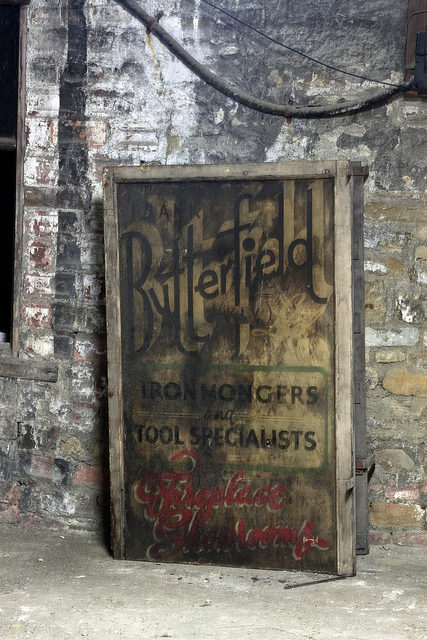In the town of Keighley, there stands a royal arcade offering all sorts of pleasures for its visitors. But this journey through time is about what lies beneath its surface, about a secret accidentally forgotten.
It was during the restoration of this royal arcade in West Yorkshire, England, when the secret once more resurfaced. What the workers found in the basement of this arcade was a whole street equipped with Edwardian style shops, forming a unique time capsule.
All photos were taken by Simon Sugden – Facebook Fanpage

The whole site was once located at ground level but became deserted during the 1890s, in the period when Queen Victoria left this world and joined her predecessors, and Edward VII inherited the throne.

During the 19th century, the town was expanding at a constant rate. Industries shaped and formed how the visage of the town would look and a whole row of houses just added to the overall character.

The houses were equipped with gardens both in the front and the backyard. They whole area was remodeled and reshaped through time. For example, the houses at this spot were refurbished to serve their new purpose by joining one to another and by adding new wings and all sorts of different attachments.

The gardens, however, were kept, for the Victorians had a thing for gardens. This whole land was just a small piece of the Devonshire Estate. With time, the owner of this estate fell into financial difficulties and a logical thing was to sell some of his property.

Low Street was the first piece of land he disposed of. This land now needed a new owner, and as such appeared Turner & Fowlds, already proud owners of a retail area and some land just across from Low Street.
Just one year before the turn of the century, Turner & Fowlds came up with a bright idea. They wanted to build a shopping arcade that was completely covered, shielding its visitors from the elements. And so they got on with fulfilling their plan.

Some of the older buildings were kept safe while the rest were completely demolished. The plan was to accommodate a great number of shops with clearly visible storefronts. The new arcade was shaped like the letter “T” occupying Low Street and Fleece Street.
Once finished, the arcade had 12 shops in total. Many of these shops, especially the larger ones, had their own cellar storage. Access to the cellars was by a set of a staircase. The smaller shops had a single undivided space, and the east-west section of this arcade had only single room storage units.

Connecting these units were corridors and different walkways. The business flourished until 1915 when Turner passed away. The arcade was left to his sons, but they thought that it would be best to sell the business piece by piece. By 1933, Frank Butterfield owned a large part of the arcade. He ran this business profitably until the 1980s. With time the arcade got so old that it was hard to maintain it.


It was officially closed in 1987. Once locked, it remained that way for 12 years until Kingfisher Developments purchased the property and proposed a renovation, to bring the old Edwardian glory back to life.

During the renovations and clearing of the cellars (which by this point were filled with debris) the workers discovered what was actually in there in the first place. The underground section of the arcade was not just a simple cellar – it was actually an underground arcade.

Both sides of the corridors were filled with shops, and surprisingly the storefronts were undamaged, complete with their lettering and advertisements. Like a small underground city hidden from time itself.

The fact that it was sealed off for a long time was what kept this place alive, waiting to be rediscovered. Today there are plans to renovate this forgotten Edwardian wonder and to share it with the public.
